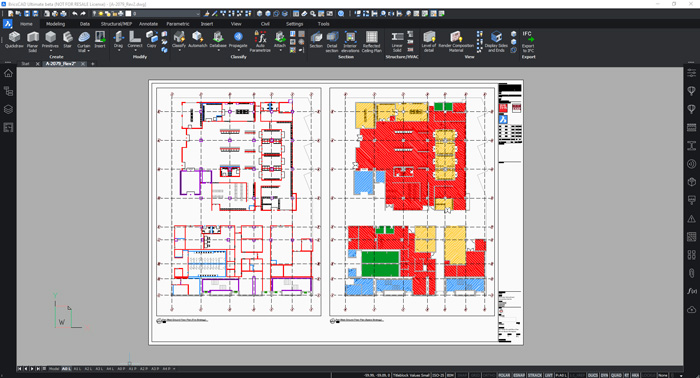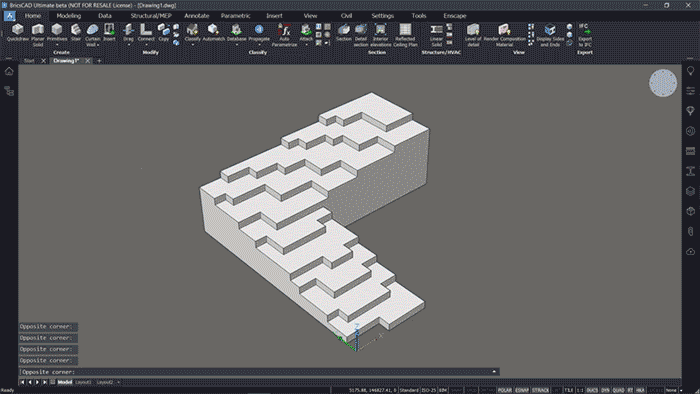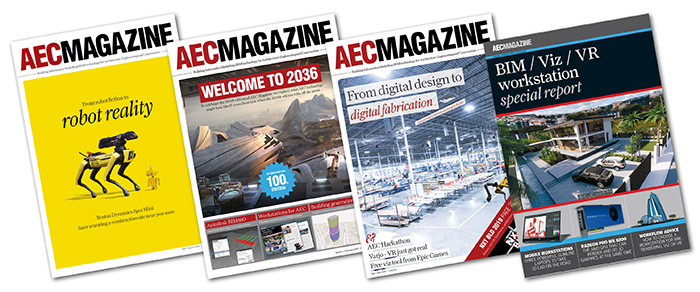‘End-to-end’ BIM tool features several enhancements to reduce the time spent on ‘boring and repetitive tasks’
Bricsys enlisted the help of its BIM Alliance partner HOK for the development of BricsCAD BIM V21, the latest release of the DWG-based BIM authoring tool. The global design, architecture, engineering and planning firm helped analyse workflows in other BIM products in order to optimise the BricsCAD BIM user experience.
BricsCAD BIM V21 includes a number of enhancements designed to reduce the time spent on ‘boring and repetitive tasks’. The new release also reinforces the software’s ‘end-to-end’ workflow, so instead of creating and recreating a model for different stages of the design process, it allows users to model ‘once and continuously’, adding Levels of Development (LODs) as the design progresses.
The new release also extends the software’s Artificial Intelligence (AI) capabilities. A new ‘QuickBuilding’ tool, for example, automatically converts geometry into a BIM model, shelling ‘almost any solid’ and creating walls, storeys and slabs automatically. These elements can then be edited and reassigned.
Other AI tools from previous releases include BIMIFY, that uses machine learning to analyse the whole drawing and automatically add BIM data, and PROPAGATE, which uses AI to replicate component details throughout a model.
BricsCAD BIM V21 also includes improved construction documentation. New drawing customisation features give users ‘complete control’ over how their 2D documentation will look. Users can add custom symbolic representations and graphic line overrides on property-based queries, such as, space area plans, fire safety plans and structural floorplans. Those customisations can then be re-used across views and projects.

Bricsys has also improved the workflow for quantity take-off and schedules, including the extraction of quantity data for individual composition plies. Users can create their own quantities for any BIM type using expressions, such as price per linear metre, etc.
Visualisation has also been improved and a new integration with TwinMotion, the real-time immersive 3D architectural visualisation tool based on Unreal Engine, is designed to make it easy to create photorealistic stills and animations, directly from the BIM model.

There have also been some interoperability improvements and users can now import geometry from Autodesk Revit (.RVT) projects, as a reference or as native solids. Improvements to IFC import and export mean users not only get better performance and stability but can now map internal BIM types with IFC types.
General application performance has also been improved with enhanced multi-core support, while Xrefs now load in the background, meaning users can open a large model and begin working, without waiting for everything to load first.
We’ll have more on BricsCAD BIM V21 in the coming weeks.
If you enjoyed this article, subscribe to our email newsletter or print / PDF magazine for FREE







